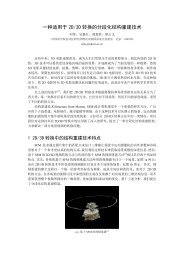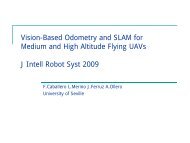Rotationally Invariant Descriptors using Intensity Order ... - IEEE Xplore
Rotationally Invariant Descriptors using Intensity Order ... - IEEE Xplore
Rotationally Invariant Descriptors using Intensity Order ... - IEEE Xplore
You also want an ePaper? Increase the reach of your titles
YUMPU automatically turns print PDFs into web optimized ePapers that Google loves.
This article has been accepted for publication in a future issue of this journal, but has not been fully edited. Content may change prior to final publication.<br />
<strong>IEEE</strong> TRANSACTION ON PATTERN ANALYSIS AND MACHINE INTELLIGENCE 9<br />
<br />
<br />
<br />
<br />
<br />
<br />
<br />
<br />
<br />
<br />
<br />
<br />
(a)<br />
<br />
<br />
<br />
<br />
<br />
<br />
<br />
<br />
<br />
<br />
<br />
Fig. 2. Distributions of the orientation estimation errors between corresponding points. (a) The distribution among all the<br />
corresponding points, only 63.77% of the corresponding points have errors in the range of [-20 o ,20 o ]. (b) The distribution<br />
among those corresponding points that are matched by their SIFT descriptors. See text for details.<br />
used two local descriptors (SIFT and DAISY) with two different orientation assignment methods<br />
for image matching:<br />
(1) The orientation is assigned by the ground truth orientation, and the constructed local de-<br />
scriptors are denoted as Ori-SIFT and Ori-DAISY.<br />
(2) The orientation is assigned by the method suggested in [6], and the constructed local<br />
descriptors are denoted as SIFT and DAISY.<br />
By comparing the performance of Ori-SIFT (resp. Ori-DAISY) with SIFT (resp. DAISY),<br />
we can get a clear understanding of the influence of the orientation estimation on constructing<br />
local descriptor for image matching. Experimental results are shown below the tested image<br />
pairs in Fig. 3. It can be seen from Fig. 3 that Ori-SIFT (Ori-DAISY) significantly outperforms<br />
SIFT (DAISY). Since the only difference between Ori-SIFT (Ori-DAISY) andSIFT (DAISY)<br />
is the orientation assignment method, it demonstrates that a more accurate orientation estimation<br />
will largely improve the performance of the local descriptor. The currently used orientation<br />
estimation method based on the histogramming technique is still an error-prone procedure and<br />
will adversely affect the performance of the local descriptor. Therefore, it leaves a long way for<br />
local descriptor to be inherently rotation invariant 1 while maintaining its high distinctiveness.<br />
In this paper, we make an effort along this way and propose constructing local descriptors by<br />
1 It means achieving rotation invariance without resorting to an estimated orientation for reference.<br />
November 26, 2011 DRAFT<br />
(b)



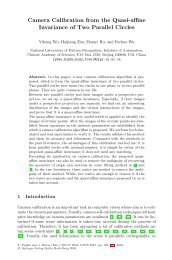
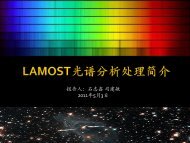
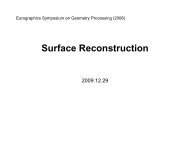
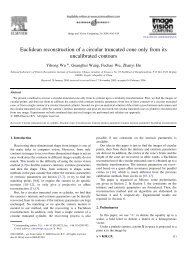
![Accurate, Dense, and Robust Multi-View Stereopsis (PMVS) [1,2,3]](https://img.yumpu.com/19388840/1/190x135/accurate-dense-and-robust-multi-view-stereopsis-pmvs-123.jpg?quality=85)





